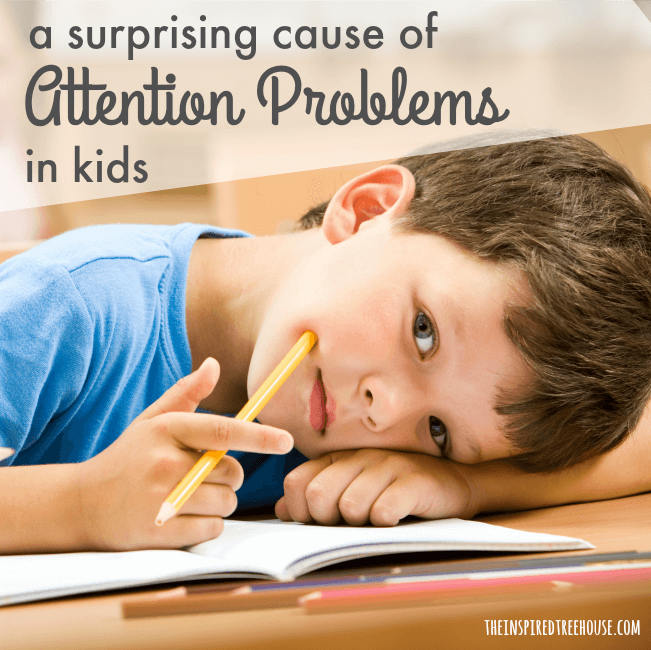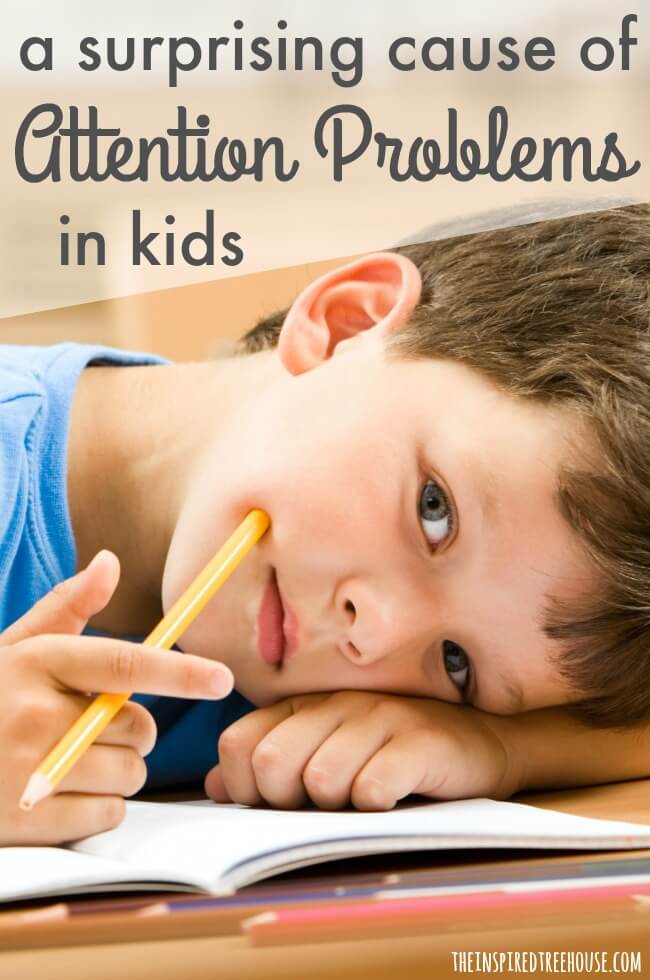It’s more and more common these days to hear about kids with attention problems – kids who can’t sit still, kids who can’t focus on their school work, and kids who are too distracted to carry out simple everyday tasks.
We talk a lot here at The Inspired Treehouse about sensory processing needs and how they can impact kids’ ability to attend and function at school and at home. And there are also many children whose attention problems fall into the category of attention-deficit/hyperactivity disorder. But there is one other surprising reason that many children are unable to attend to tasks throughout the day: weak core muscles.
What Does Core Strength Have to Do With Attention?
Sounds crazy, doesn’t it? What does core strength have to do with attention? We’re glad you asked! Here are some common things we see in our school-based therapy practice:
1 || When kids don’t have good core muscle endurance, they struggle with sitting in one position for extended periods of time.
So what do they do? They move around. A lot. They shift, they lean, they slump, and they fidget. Not surprisingly, while they’re doing all of these movements, they aren’t able to attend to their teachers or the worksheet they’re supposed to do for homework.
2 || Kids with weak core muscles also have to pay so much attention to maintaining functional upright posture that they don’t have a whole lot of focus left for academic tasks and other tasks of everyday living.
3 || And, because they are working so hard on maintaining good posture, kids often become frustrated and agitated when presented with seemingly simple tasks and activities. They simply don’t have the stamina to do both.
4 || When kids don’t have “proximal stability” (i.e. a strong core), they often struggle with tasks that require fine motor coordination like handwriting, working with manipulatives for math, or cutting with scissors. Because these activities are extra challenging for kids with core muscle weakness, they lose interest and attention easily, rush through their work, or give up before even trying.
5 || A weak core means poor posture and having poor posture makes it difficult to visually attend to tasks.
When a child is slumped, leaning, or lying on his desk, he is less likely to be looking at the teacher who is standing at the front of the room and he may struggle with maintaining visual attention to the paper or book on his desk.
6 || Kids with weak core muscles often avoid whole body movement activities (climbing, jumping, team sports) because they are simply too challenging.
Therefore, these kids are less likely to get the sensory input they need from movement activities that can help them regulate their behavior and attend.
While there is a whole slew of reasons that a child may be demonstrating attention problems, we think that taking a closer look at core strength is often a smart place to start!
Do you see any of these or other signs of core muscle weakness in your kids or the kids you work with? Want more information about how to support core strength in kids? Check out all of our best core strengthening resources here!


Latest posts by Lauren Drobnjak (see all)
- End of the Year Gifts for Therapists - April 14, 2024
- Playful Therapy Posters to Spruce Up Your Room - March 30, 2024
- How to Help a Baby Crawl & Creative Crawling Patterns We See in Therapy - March 19, 2024



[…] One Surprising Cause of Attention Problems in Kids […]